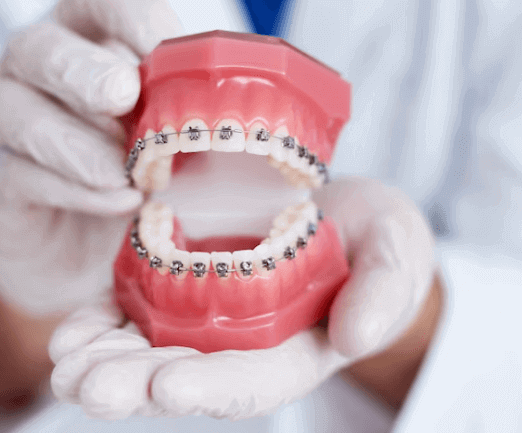
How Much Do Braces Hurt on a Scale 1-10
Braces are a common orthodontic solution that helps align teeth and create a beautiful smile. Yet, among the concerns of those considering braces, a predominant question looms: “How much do braces hurt on a scale 1-10?”
Introduction to Braces and Pain Perception
Dental braces are orthodontic devices designed to align and straighten teeth. However, the pain perception associated with braces varies widely among individuals. Factors such as pain tolerance, individual dental conditions, and the stages of brace treatment contribute to the varying levels of discomfort.
The Pain Scale and Braces
Understanding the pain scale is essential to gauge the discomfort associated with braces. Typically, the discomfort experienced during brace treatment falls between 4 to 6 on a scale of 1-10. This range is subjective and can differ for each person.
Initial Discomfort: Setting Expectations
During the installation of braces, the initial discomfort may spike to around 6-8 on the pain scale. This discomfort gradually decreases as the mouth adjusts to the new braces. It’s crucial to anticipate this discomfort but also understand that it’s temporary.
Subsequent Pain: Managing Discomfort
Periodic adjustments to braces can cause mild discomfort, generally ranging from 3 to 5 on the pain scale. However, various strategies such as over-the-counter pain relievers, orthodontic wax application, and warm saltwater rinses can effectively manage this discomfort.
Long-Term Effects: Pain Reduction
As the treatment progresses, the discomfort from braces tends to decrease. The mouth adapts to the braces, leading to reduced pain levels. Additionally, adhering to orthodontist-recommended practices and maintaining oral hygiene significantly minimizes discomfort.
Individual Variations: Differing Experiences
Individual pain thresholds greatly influence the experience with braces. Some may experience minimal discomfort throughout the treatment, while others may find it more challenging. It’s crucial to communicate any heightened discomfort to the orthodontist to explore personalized solutions.
Professional Insights: Orthodontist’s Perspective
Orthodontists emphasize that while discomfort is normal, severe pain is uncommon. They recommend using orthodontic wax for discomfort due to brace components rubbing against the mouth. Moreover, scheduling regular check-ups allows them to address any concerns promptly.
Emotional Impact: Beyond Physical Pain
Beyond physical discomfort, brace wearers might experience emotional effects. Coping strategies like talking to the orthodontist, sharing experiences with peers, and practicing relaxation techniques can help manage emotional distress.
Conclusion
In conclusion, the discomfort associated with braces typically ranges from moderate to manageable levels on a pain scale of 1-10. Understanding the stages of brace treatment, managing expectations, and employing effective coping strategies can significantly ease discomfort and ensure a smoother orthodontic journey. So this was all about how much do braces hurt on a scale 1-10.
FAQs
- Do braces hurt when you first get them?
- Initially, there might be discomfort for a few days as your mouth adjusts, but it’s manageable with mild pain relievers.
- What helps reduce the pain from braces?
- Orthodontic wax, over-the-counter pain relievers, warm saltwater rinses, and adhering to the orthodontist’s advice can alleviate discomfort.
- Is brace discomfort constant throughout the treatment?
- No, it tends to reduce over time as your mouth gets accustomed to the braces and with proper care.
- Are there differences in pain perception among age groups?
- Pain perception can vary, but age isn’t necessarily a determining factor. Individuals of different ages may have varied experiences.
- When should I contact my orthodontist about severe pain?
- If you experience persistent or severe pain beyond what’s considered normal discomfort, it’s advisable to consult your orthodontist for evaluation.
Visit our website for more. Click here: “Quick Trend Insights“.





